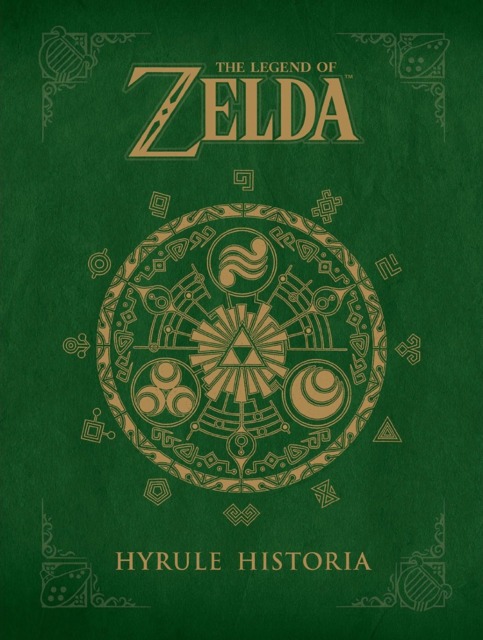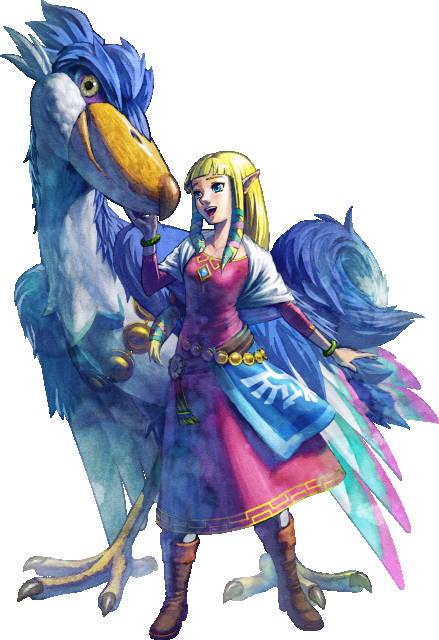Belated Impressions of Hyrule Historia
By Hailinel 12 Comments

Looking back at my recent blog and forum history, I’ve written an unusual volume about Zelda lately. But it’s kind of hard for me not to, what with A Link Between Worlds being an excellent game and Hyrule Warriors looking like a Zelda game that was designed specifically for me in mind. Given that I’ve barely touched a Zelda game otherwise in recent memory, it’s been a very peculiar month in that regard.
To go along with all of this, I decided to finally sit down and read through Hyrule Historia, the combination art book/Zelda chronology that was published in English close to a year ago. I actually bought a copy of the book when it was first released, but other than glance at some of the artwork, I hadn’t actually read through it until recently. So yes, I am late to the party on that.
That being said, Hyrule Historia is also the most comprehensive compilation of information on The Legend of Zelda from an official source you’re going to find anywhere. Fans had speculated for years on the existence and make-up of an official Zelda timeline, and the news did make the rounds when it turned out that Nintendo does have an official Zelda timeline that they had kept internally for some period of time. What’s surprising upon reading the book is just how much thought was actually put into making the timeline fit together, even when it does that three-way split with Ocarina of Time’s time travel shenanigans.
Of course, before the book even touches upon the chronology, it dedicates a substantial portion to Skyward Sword, in particular. This makes sense, given that when the book was published, it was it was still the newest title, and there’s an absolute wealth of Skyward Sword artwork included, from character and monster concepts to weapon, landscapes, and interiors. And it’s all annotated with insightful commentary into the game’s artistic design process. And you know? Reading this book really makes me wish I was more comfortable playing Skyward Sword, but being a lefty, the motion controls just didn't click with me when I tried them. Which is really a shame, because this book makes the plot sound fantastic.
Following this is the chronology, which is, as I said before, incredibly detailed. Though it acknowledges up front that not every Zelda game is considered canonical (naming Link’s Crossbow Training and BS The Legend of Zelda as examples; no, it doesn't make any mention at any point of the CD-i games. Why are you even asking that?), there’s still fifteen games listed as a part of the timeline. And the book doesn’t simply describe events game by game, but by the actual chronology; for example, it starts off with the creation of Hyrule as told in Ocarina of Time before moving on to Skyward Sword, then talks about some more of the history as divulged in Ocarina of Time before moving on to the events of The Minish Cap and Four Swords. And then it discusses the “present” events of Ocarina of Time in detail. Throughout, the book points out little details here and there that connect the games here and there, like recurring symbols and other representation.

Most importantly, this detail doesn’t get mired as the timeline splits. It handles one branch at a time, and does a great job of detailing how the histories of each game weave together. There are times when it’s evident that some connections or explanations are reaching, and certainly some continuity inconsistencies, but on the whole, anyone that has an appreciation for the storylines in Zelda or for fictional histories in general would probably get a kick out of the presentation. Also, just to anyone that's lamented the lack of a "dark" Zelda: Shut up and read this book. There are plenty of dark elements in Zelda's history, and Hyrule Historia makes no attempt to sugarcoat it. It also raises some interesting questions that aren't discussed in the text, like whatever became of Lorule and Termina in the timelines in which they haven't been explored.
Following the chronology, there’s a collection of artwork and production materials from throughout the series. It’s unfortunate, but understandable, that not every game is represented equally here. There are very few surviving designs from some games, and Link’s Awakening in particular is limited to a collection of sheets depicting design concepts for the game’s opening, which are all displayed on a single page. On the other hand, it also reveals a certain lighter side to the development; there are a couple of rough Zelda sketches from A Link to the Past that depict her dressed in a goofy 80s/early 90s-style of sci-fi anime costume.
The newer games, with their larger scopes and more recent development, have a much greater wealth of material to pull from. There are thirty pages of artwork from Twilight Princess alone. And like the opening section on Skyward Sword, it’s all given thoughtful annotation.
All of the above are bookended by a foreword and afterword by Shigeru Miyamoto and Eiji Aonuma, respectively. And then as an added bonus, there’s a short-story manga prequel to Skyward Sword at the very back written and drawn by a pair that have been adapting Zelda games into manga for over a decade. It’s very well drawn, and an interesting short-story (Holy shit, Link talks, and he doesn't sound like someone that ate paint chips as a toddler!), and in retrospect, might actually have a few hints at things to come in Hyrule Warriors.
So I guess the end result of all of this is, I wish I had actually sat down to read Hyrule Historia sooner. It goes above and beyond the usual art book to present a lot of very detailed information that a hardcore Zelda fan would eat up and even casual fans should find interesting. It’s just as interesting as a historical work on the series and its development as it is as a book of pretty pictures.